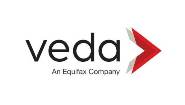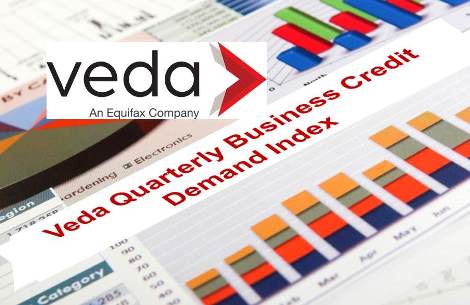- Overall business credit applications rose +4.0% (vs December quarter 2015)
- Growth in business loan applications rose +5.7% (vs December quarter 2015)
- Rate of growth in trade credit applications and asset finance also rose (vs December quarter 2015)
The Veda Quarterly Business Credit Demand Index – measuring applications for business loans, trade credit and asset finance – saw applications rise at an annual rate of +4.0% in the December 2016 quarter. This rate of growth in business credit demand was buoyed by a recovery in asset finance (+3.0%) and particularly by an increase in business loan applications (+5.7%), supported by the strength of commercial mortgage applications.
Released by Veda, Australia and New Zealand’s leading provider of consumer and commercial data and insights and a wholly-owned subsidiary of Equifax, the Veda Business Credit Demand Index once again showed a disparity between the business conditions of mining and non-mining states. The Veda Business Credit Demand Index has historically proven to be a lead indicator of how the overall economy is performing. The behaviour seen in the annual rate of growth in business credit applications, illustrated by Veda’s data, suggests an improved economic outlook.
Business loan applications were the strongest performer in the December quarter, continuing the growth seen in the previous quarter. Once again, the increase was driven by mortgage application growth (+22.5%), which has now returned to the strong annual growth rate recorded in the June quarter of 2015.
Growth in overall business credit applications improved in the December quarter (+4.0%). Victoria led the way, with a growth rate of +6.8%. This was followed by the ACT (+6.1%), NSW (+4.4%), Tasmania (+3.6%), and SA (+3.3%). The mining jurisdictions continued to be more subdued, with only Queensland experiencing positive growth (+2.3%). WA (-1.3%) and the NT (-1.0%) both showed falls in the December quarter.
Growth in business loan applications picked up in the December quarter (+5.7%). NSW (+9.2%), Victoria (+8.7%), SA (+3.2%), and the ACT (+1.9%) all reported solid growth in business loan applications, although Tasmania (-2.0%) experienced a fall. Of the mining jurisdictions, WA (+2.6%) was the strongest performer in the December quarter, while Queensland (-0.8%), and the NT (-8.3%) declined.
Within business loans, growth in lending proposals (+7.7%) and mortgage applications (+22.5%) were up in the December quarter, but credit cards (-17.1%), overdrafts (-4.8%), and premium finance (-24.1%) fell.
 Trade credit applications recovered in the December quarter (+2.6%). The growth in trade credit applications was strongest in the ACT (+14.1%), followed by the NT (+7.0%), Victoria (+5.4%), SA (+5.0%), Tasmania (+4.0%), Queensland (+4.0%), and NSW (+0.9%). WA (-4.3%) was the only jurisdiction to experience a fall. The improvement in trade credit applications reflects a lift in the main category of 30 day accounts (+2.3%), which has improved from an annual rate of decline of -0.7% in the September quarter of 2016.
Trade credit applications recovered in the December quarter (+2.6%). The growth in trade credit applications was strongest in the ACT (+14.1%), followed by the NT (+7.0%), Victoria (+5.4%), SA (+5.0%), Tasmania (+4.0%), Queensland (+4.0%), and NSW (+0.9%). WA (-4.3%) was the only jurisdiction to experience a fall. The improvement in trade credit applications reflects a lift in the main category of 30 day accounts (+2.3%), which has improved from an annual rate of decline of -0.7% in the September quarter of 2016.
Growth in asset finance applications moved higher in the December quarter (+3.0%). Across the non-mining jurisdictions, growth in asset finance applications remained positive in Tasmania (+11.9%), Victoria (+5.6%), the ACT (+3.4%), NSW (+1.3%), and SA (+1.4%). In the mining jurisdictions, growth in asset finance applications was strongest in Queensland (+5.0%), but fell in WA (-2.5%) and the NT (-3.1%).
There was some differing movement within asset finance account types. Applications for commercial rental (+13.9%) continued to show strength, as did auto loans (+11.2%), leasing (+9.8%) and bill of sale (+28.2%). In contrast, applications for hire purchase (-16.4%) fell sharply for another quarter.
The Veda Quarterly Business Credit Demand Index measures the volume of credit applications that go through the Veda Commercial Bureau by credit providers such as financial institutions and major corporations in Australia. Based on this it is a good measure of intentions to acquire credit by businesses. This differs to other market measures published by the RBA/ABS, which measure new and cumulative dollar amounts that are actually approved by financial institutions.
 To read the full story click on the link below.
To read the full story click on the link below.
Source: Veda Press Release























